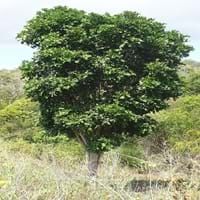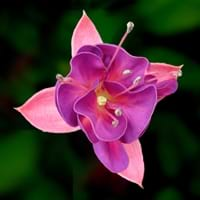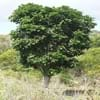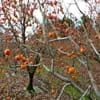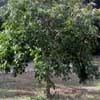Life Span
Perennial
Perennial
Type
Tree
Tender Perennial
Origin
Australia
Caribbean
Types
Not Available
Fuchsia Decidua, Fuchsia Fulgens, Fuchsia Splendens, Fuchsia Microphylla
Number of Varieties
Not Available
Habitat
Littoral rainforest, Near Estuaries
Forest edges, Woods
USDA Hardiness Zone
9-15
9-10
Sunset Zone
H1, H2, 16, 17, 18, 19, 20, 21, 22, 23, 24
16, 17, 23, 24
Habit
Spreading
Arching/Fountain-shaped
Flower Color
White
Orange Red
Flower Color Modifier
Bicolor
Not Available
Fruit Color
Orange, Light Yellow, Orange Red, Black
Not Available
Leaf Color in Spring
Green, Light Green, Yellow green
Purple, Dark Green
Leaf Color in Summer
Green, Yellow green
Purple, Dark Green
Leaf Color in Fall
Green, Yellow green
Purple, Dark Green
Leaf Color in Winter
Green, Yellow green
Unknown
Leaf Shape
Pinnate
Long Linear
Plant Season
Spring, Summer, Fall, Winter
Spring, Summer, Fall, Winter
Sunlight
Full Sun, Partial Sun, Partial shade
Full Sun, Partial Sun, Partial shade
Growth Rate
Medium
Medium
Type of Soil
Clay, Loam, Sand
Clay, Loam, Sand
The pH of Soil
Acidic, Neutral, Alkaline
Acidic, Neutral
Soil Drainage
Average
Average
Bloom Time
Early Spring, Spring
Indeterminate
Tolerances
Frost, Pollution, Salt
Drought
Where to Plant?
Ground
Container, Ground, Pot
How to Plant?
Seedlings
Seedlings, Stem Planting, Transplanting
Plant Maintenance
Medium
Medium
Watering Requirements
Reduce water once established, Requires regular watering, Requires watering in the growing season
Requires regular watering
In Summer
Average Water
Lots of watering
In Spring
Less Watering
Moderate
In Winter
Less Watering
Average Water
Soil pH
Acidic, Neutral, Alkaline
Acidic, Neutral
Soil Type
Clay, Loam, Sand
Clay, Loam, Sand
Soil Drainage Capacity
Average
Average
Sun Exposure
Full Sun, Partial Sun, Partial shade
Full Sun, Partial Sun, Partial shade
Pruning
Prune if you want to improve plant shape, Remove dead or diseased plant parts
Prune in spring, Prune lower leaves, Remove dead or diseased plant parts, Remove deadheads, Remove shoots
Fertilizers
slow-release fertilizers
All-Purpose Liquid Fertilizer
Pests and Diseases
Borers
Rhizoctonia Root Rot, Rust
Plant Tolerance
Frost, Pollution, Salt
Drought
Flowers
Insignificant
Yes
Flower Petal Number
Single
Single
Fragrant Bark/Stem
Yes
No
Foliage Texture
Medium
Medium
Foliage Sheen
Glossy
Matte
Attracts
Birds, Butterflies
Hummingbirds
Allergy
Skin rash
Asthma, Hay fever
Aesthetic Uses
Beautification, Landscape Designing, Showy Purposes
Showy Purposes
Beauty Benefits
Not Available
Not Available
Environmental Uses
Air purification, Food for birds, Nesting sites for birds, No fertilizer, pesticides, or herbicides needed, Prevent Soil Erosion, Shadow Tree, Shelter for wildlife, Used to establish native woodland
Air purification
Medicinal Uses
No Medicinal Use
Not Available
Part of Plant Used
Tree trunks
Flowers, Fruits
Other Uses
Used as firewood, Wood is used fore making tools, Wood is used in construction
Not Available
Used As Indoor Plant
No
Yes
Used As Outdoor Plant
Yes
Yes
Garden Design
Shade Trees, Tropical
Bedding Plant, Container, Feature Plant, Foundation, Hedges, Tropical
Botanical Name
CUPANIOPSIS anacardioides
FUCHSIA triphylla
Common Name
Tuckeroo, Green leaved tamarind
Fuchsia
In Hindi
Carrotwood ट्री
फ्यूशिया
In German
Carrotwood Baum
Fuchsie
In French
Carrotwood Arbre
Fuchsia
In Spanish
Árbol carrotwood
Fucsia
In Greek
Carrotwood Δέντρο
φουξία
In Portuguese
Árvore Carrotwood
Fúcsia
In Polish
Carrotwood Drzewo
Fuksja
In Latin
Carrotwood ligno
Fuchsia
Phylum
Magnoliophyta
Magnoliophyta
Class
Magnoliopsida
Dicotyledonae
Order
Sapindales
Myrtales
Family
Sapindaceae
Onagraceae
Genus
Cupaniopsis
Fuchsia
Clade
Angiosperms, Eudicots, Rosids
Angiosperms, Eudicots, Rosids
Tribe
Not Available
Not Available
Subfamily
Sapindoideae
Not Available
Number of Species
Not Available
Importance of Carrotwood Tree and Fuchsia
Want to have the most appropriate plant for your garden? You might want to know the importance of Carrotwood Tree and Fuchsia. Basically, these two plants vary in many aspects. Compare Carrotwood Tree and Fuchsia as they differ in many characteristics such as their life, care, benefits, facts, etc. Every gardener must at least have the slightest clue about the plants he wants to plant in his garden. Compare their benefits, which differ in many ways like facts and uses. The medicinal use of Carrotwood Tree is No Medicinal Use whereas of Fuchsia is Not Available. Carrotwood Tree has beauty benefits as follows: Not Available while Fuchsia has beauty benefits as follows: Not Available.
Compare Facts of Carrotwood Tree vs Fuchsia
How to choose the best garden plant for your garden depending upon its facts? Here garden plant comparison will help you to solve this query. Compare the facts of Carrotwood Tree vs Fuchsia and know which one to choose. As garden plants have benefits and other uses, allergy is also a major drawback of plants for some people. Allergic reactions of Carrotwood Tree are Skin rash whereas of Fuchsia have Asthma and Hay fever respectively. Having a fruit bearing plant in your garden can be a plus point of your garden. Carrotwood Tree has showy fruits and Fuchsia has no showy fruits. Also Carrotwood Tree is not flowering and Fuchsia is flowering. You can compare Carrotwood Tree and Fuchsia facts and facts of other plants too.
